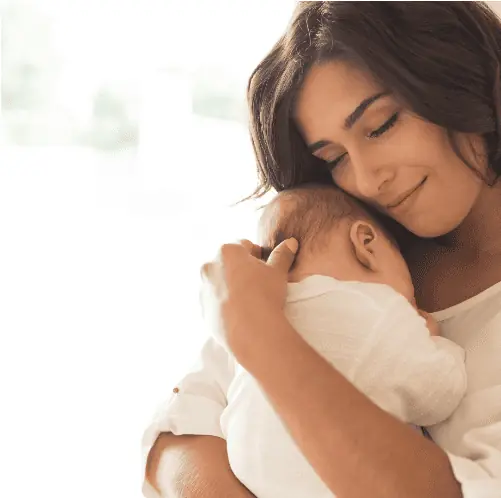50 Ways the American Family has Changed in the Last 50 Years
This post may contain affiliate links. As an Amazon Associate, I earn from qualifying purchases.
The Cleavers are often referred to as the classic American family—and almost 56 years ago, when “Leave it to Beaver” aired its final episode, they most certainly were. In those days, the all-American family ideal included a working father, stay-at-home mother, and at least two children living in a home they owned and all left on Sundays to attend church.
Today, family life looks much different. Women make up nearly as much of the workforce as men, more families are choosing to rent than buy, church attendance has dropped by nearly 50%, and the core family is just as likely to be made up of same-sex parents or cohabiting partners than a heterosexual married couple.
Compiling data from a number of sources, Stacker has rounded up 50 ways the American family has changed in the past 50 years. From who makes up the modern-day American family to major aspects of family life, click through the list to see some of the most dramatic differences.
Related read: 64 Tips for Family Budgeting
People are getting married much older
In 1969, the average woman would get married before she could legally drink. Throughout the 1960s, the median age for first-time brides was 20, and the median age for first-time grooms was 23. Today the median age for brides is 27; for grooms, it’s 29.
Fewer people are married
As the age of those getting married for the first time has gone up, the overall number of married couples has gone down. In 1960, 72% of adults over 18 were married, while today, only 51% of adults over the age of 18 are married.
More unmarried people cohabitate
One reason for this decline is the number of couples who are choosing to live together without exchanging rings. In the 1960s, fewer than 500,000 unmarried couples were living together before or instead of getting married. By 2012, there was a 900% increase in cohabiting couples; U.S. Census data from that year revealed that 7.8 million couples were living together without having walked down the aisle.
Divorce has risen and fallen
Between 1960 and 1980, the so-called “crude divorce rate” in America leapt from 2.2 to 5.2, making for a startling 136% increase. But divorce has been trending downwards since the early 1990s, particularly among millennials who are marrying later.
More children live with divorced parents
In 1969, nearly all children remained in the home of their married parents until reaching adulthood. Today, less than half of all children make it to 18 in a family headed by their married parents.
There are more blended families
Data on blended families didn’t become available until the early 1990s. However, it is now known that one in six (or 16%) of children are living in blended families. These households have a step-parent as well as a step-sibling or half-sibling. While data is not available for blended families in 1969, it’s likely that the number was far lower as the result of a lower divorce rate.
Same-sex marriage has been legalized
In 1969, obtaining a marriage license as a same-sex couple simply wasn’t an option. Generally speaking, overall visibility for same-sex couples was lower, with fewer couples choosing to live openly as partners due to societal norms. In 2015, the legalization of same-sex marriage finally afforded same-sex couples legal status and dramatically increased the number of reported households made up of same-sex partners.
First-time mothers are getting older
For many married couples in the 1960s and ‘70s, having children was a priority, and one they didn’t wait long to begin working on. The average age for first-time mothers in the 1970s was 21. In 2015, many women chose to wait longer to become parents, and the average age of first-time mothers has jumped to 27.
More mothers pursue additional education
One reason women wait to have children is so they can further their education. In the 1960s, only 18% of new mothers had any college education. These days, 67% of mothers with infants at home have at least some college under their belts, even if they don’t have a diploma from a four-year program.
Family size is decreasing
Due perhaps in part to the older age of first-time parents, many families are having fewer children. In the 1970s, 40% of families reported having four or more children. Today, 41% of families have only two children, with just 14% having four or more. Additionally, the number of families with a single child doubled from 11% in 1976 to 22% in 2015.
The number of working mothers is increasing
In the late 1960s, almost 50% of women were stay-at-home mothers. Since then, family life has been greatly affected by the movement of mothers into the workforce. In 1975, the first year with available data on mothers in the workforce, less than half of mothers with children under 18 held a full-time or part-time job, and less than one-third of mothers with children under 3 worked outside of the home. By 2015, 70% of mothers with children under 18 and 64% of mothers with children under 3 held jobs. The desire to continue working into parenthood has been a major factor in smaller family sizes.
Related read: 47+ Business Ideas for Women
Families are attending church less frequently
While regular church attendance peaked in the late 1950s, the vast majority (well over 50%) of families still regularly attended church each week well into the 1960s. As of 2014, only 36% of adults reported that they and their families attended church weekly. One reason more people are staying home on Sundays? The logistics of going to church, after a full of workweek for both parents, are too overwhelming.
House size has increased
Surprisingly, as family sizes have gone down, home sizes have gone up. In 1973, the first year with available Census data, the average size of the family home was 1,660 square feet. Today, houses have hit an average all-time high of 2,679 square feet.
More families are renting homes
For many families, owning a home has always been a major part of their “American Dream.” In the early 1970s, 62.9% of families owned their own homes, a rate that continued to increase until the early 2000s. Due to the rising costs of single-family homes, economic downturns, and other factors, renting is on the rise again. Over the past decade, homeownership declined by 3.6 million families, while the number of families living in rentals increased by 1.9 million.
Family incomes are higher
According to the U.S. Bureau of the Census, the median family income in 1969 was $55,916 (adjusted for inflation). In 2017, the median family income was $75,938. That means over the past 50 years, most American families have lived well within the bounds of the wealthiest 1% of the world.
Pregnant workers have legal protection
The $20,000 increase in the median family income is partially due to the Pregnancy Discrimination Act, which was passed in 1978. Before then, women could be (and often were) fired from their places of employment once it became clear they were pregnant. This cut off an entire revenue stream for many families. Now that the right to work is legally protected for both parents, many families have seen a significant and lasting increase in their income.
Family vacations are on the rise
Many people have nostalgic memories of family vacations, a phenomenon that began in the 1960s with the development of the Interstate Highway System and increase in a family’s expendable income. Today, the average family has more expendable income than they did in 1969, and they’re using it for even more family vacations. In 2017, 35% of families took at least one family vacation, with the old-school road trip still the most common type of holiday.
Related read: Top Vacation Destinations
Families are safer on the road
Today’s drivers can get a ticket for not wearing their seat belts properly; seat belt laws took effect in 1983. But in the early 1970s, as families embarked on their annual road trips, it was not uncommon for the kids to be without a seat belt or to have the smallest children sitting front and center between their parents—things you definitely wouldn’t see on a family vacation today.
More families are watching TV
Expendable income isn’t just being spent on family vacations. Many families are choosing to spend their extra dollars on other forms of entertainment, like television. In 1969, there were 58.25 million television homes in the country. In 2018, there were 119.6 million television homes in the country. As a whole, Americans are spending more time around the tube.
Family dinners are a thing of the past
While American families spend more time watching TV together today than they did 50 years ago, they’re spending far less time eating dinner together. Family dinners were an almost nightly ritual in most homes during the 1960s and ‘70s, but a recent survey revealed that 40% of modern families only eat dinner together three times or less each week.
Fewer families eat home cooking
Not all recipes from the late 1960s and ‘70s were winners—for example, Ham and Bananas Hollandaise—but that didn’t stop Americans from cooking almost all their meals at home. Not so today. With 45% of people claiming to hate cooking, the average family is now spending $3,008 a year dining out.
Obesity is on the rise
Obesity has been steadily increasing over the past 50 years. In 1970, only about 15% of Americans were considered obese. As of 2016, nearly 40% of American adults meet the markers for being obese.
Related read: Snack Foods to Never Give Your Kids
Less is being spent on clothing
Families are spending significantly less on clothing than they were 40 years ago. In 1972, the average family dedicated 8.4% of their budget to clothing, while most families today have lowered that figure to 3%. A dramatic increase in housing costs is thought to be a major factor in the budget adjustments.
Fewer children live in a two-parent household
In the late 1960s, the “core” family was still very much intact, with nearly 87% of children living in a two-parent home where both parents were in their first marriage. In 2018, only 46% of children were living in the same type of home, giving new meaning to core family.
More adults live in their childhood home
Blame it on the economy, or the fact that people are getting married later, but for the first time since 1880, more adults are living with their parents in their childhood home rather than on their own. In 1960, only 20% of young adults still lived at home with mom and dad. In 2018, that number jumped to just over 32%—a higher percentage than those living with a partner, spouse, or roommates.
There are more interracial families
In 1967, the U.S. Supreme Court ruled that interracial marriage was legal across the country in the Loving vs. Virginia case. The same year, only 3% of newlyweds were married to someone of a different race or ethnicity. By 2017, one in six newlyweds, about 17%, were married to someone of a different race or ethnicity, making for a significant increase in interracial families.
Families struggle for quality time
According to a survey of 2,000 parents, the average family spends only 37 minutes together each day. While many families feel that amount of time is far too little, other research reveals an encouraging trend. Fathers have seven times more quality time with their children now than they did in 1974 (five minutes a day then vs. 35 minutes a day now), and mothers spend four times as much quality time with their children (15 minutes in 1974, vs. one hour in 2017).
Fewer families include children
From 1967 to 2016, the percentage of adults living without children skyrocketed from 52.5% to 71.3%. Contributors to this trend include an aging population, decreased fertility rates, and a significant shift in living arrangements—specifically, a 44% decline in adults cohabiting with spouses.
Men are helping more with housework
Fifty years ago, most women were stay-at-home mothers. They also did almost all of the housework, from vacuuming the living room to completing the grocery shopping, while men only did two hours of chores a week. Today, men have become a little more accustomed to housework, spending four hours on chores each week (a number that has held steady since the mid-1990s).
Families are reading less
With the rise of TV and the internet, it’s probably unsurprising that families are spending far less time reading today than they did 50 years ago. In 1978, only 8% of Americans hadn’t read a book in the past year. In 2014, almost a quarter of Americans went the entire year without reading a book. Parents are spending less time reading to their children as well, with experts warning the phenomenon could lead to an overall decrease in literacy.
People are getting their news differently
Many children born in the 1960s and ‘70s can probably recall being sent outside to fetch the newspaper first thing in the morning, so their parents could read it with breakfast. Today, you’d be hard pressed to find a child with that job. In 1973, 63.147 million families received a daily newspaper. In 2014, only 40.42 million families subscribed to a physical newspaper. Meanwhile, more families watch the news on TV than ever before.
Pet ownership has quadrupled
Pets are an integral part of most American families. In fact, pet ownership in this country has nearly quadrupled since the 1960s. Now, 36.5% of households own a dog and 30.4% own a cat, with birds, horses, and fish rounding out the list of most popular family pets.
Birth control is more readily available
In the early 1960s, couples didn’t have many options when it came to contraceptives. Condoms, abstinence, medically questionable practices, and crossed fingers were the most frequently employed ways to make sure that a couple didn’t start a family before they were ready. But when the FDA approved the first oral contraceptive pill in 1960, things became a bit simpler. Within five years, millions of women were on the pill, and newlyweds had much better control over the timing of their first child.
Mental illnesses are more visible
In the 1960s and ‘70s, mental illnesses were simply not talked about. Those who suffered from them chose to deal with them as a private matter and rarely sought treatment. Today, the conversation around mental illness has become more open, and the stigma surrounding it has begun to fade. Families now may be more inclined to seek treatment for members who suffer from mental illness.
Health care costs are rising
In 1969, $65.9 billion was spent on health care for American families, a total cost of $318 per person. In 2017, $3,492.1 billion was spent on health care in total, making for a cost of $10,739 per person.
There are more multigenerational families
From 2000 to 2016, the number of multigenerational homes in America rose by 21.6 million to 64 million. The number of multigenerational families living under one roof is almost double what it was in 1950 (32.2 million) and significantly higher than what it was 50 years ago.
Life expectancy is going up
A slice of good news: Those born in 2019 have a much longer life expectancy than those born in 1969. If you were born that year, your life expectancy from birth was 74.4 years. For those born this year, it’s expected to be between 76 and 81. Even though people are getting married and having children later, they may end up spending just as much time as parents or spouses as those in the previous generation.
People are retiring later
Perhaps a side effect of living later, people are also working longer. In 1970, the average retirement age was 65. Today, many in the workforce are holding down jobs until at least 66, with 15% of them choosing to continue working after that. Many children in 1969 had retired grandparents, while many of today’s children do not—at least not yet.
Giving birth has become easier
The lumbar epidural became the preferred technique for pain management during childbirth in the 1960s. The ‘70s and ‘80s saw many improvements in injection, so that between 1981 and 2001, its use in U.S. hospitals tripled. By 2001, 60% of women had an epidural while giving birth, making the process of bringing a child into the world much less painful.
More births are happening outside of marriage
Only about 10% of all births in 1969 were outside of a marriage. For many, having a child out of wedlock was shameful, and something that affected your social standing. Today, attitudes toward births outside of marriage have greatly relaxed, and nearly 40% of births in 2016 were to unmarried mothers.
Teen pregnancy rates are down
Teen pregnancy rates have been at an all-time low for the past 30 years. While not many teens were expecting children of their own in 1969, the 1990s saw a sharp spike in the number of teenage mothers; 59.9 out of every 1,000 births were attributed to a teen girl between the ages of 15 and 19. As of 2016, there was a 67% drop in the number of teen mothers, with only 20 out of every 1,000 new mothers being a teen.
There’s a steady decline in ‘the help’
In the 1960s, it wasn’t uncommon for the average family to have a housekeeper, or “help,” responsible for many housekeeping and child-rearing tasks. By the 1970s and ‘80s, advances in kitchen appliances and the availability of ready-made food made having paid help less necessary—unless you belonged to a certain social class with a large household to maintain. Today, fewer households have paid help, which can leave many parents feeling more stressed out than ever before.
The number of children in daycare is up
Since most parents have jobs, they have to find some sort of child care for their young children. In 1973, that meant that most children received care in their homes from a relative or non-relative (30.9% and 29.4%, respectively). By 2012, 25.9% of children were spending their days in a day care center—a huge spike from the 13% who were in day care in 1973.
More parents are turning to books for help
Parents in the 1970s rarely relied on parenting books to raise their young children, instead turning to those they knew personally for advice. But by the ‘90s, there were five times as many parenting books available, a trend that’s carried on into 2019. Today, there are hundreds of philosophies about parenting, and as raising children becomes more competitive, many new parents find themselves turning to books rather than their real-life counterparts.
Physical punishments for children are down
As recently as 20 years ago, physical discipline like spanking was an acceptable method of punishment for children. Today, research has accumulated illustrating a connection between physical discipline and negative development, making punishments like spanking frowned upon. They are generally used less often by modern parents than they were by parents 50 years ago.
More families place importance on higher education
Fifty years ago, parents didn’t place that much importance on their children going to college. In 1969, only 8.1% of female and 13.6% of male high school seniors went on to obtain a four-year degree. Today, about 4 in 10 parents place a high value on their children attending college, and in 2017, 34.6% of female and 33.7% of male high school seniors went on to complete a four-year degree.
More children are receiving a public education
From 1950 to 1965, following the desegregation of public schools, private schools saw an almost 100% increase in enrollment. From 1965 to 2012, private school enrollment dropped about 30% every 15 years. Today, more children than ever are enrolled in the public school system.
Women can open a line of credit
Before the Equal Credit Opportunity Act of 1974, women weren’t allowed to obtain a credit card or open a line of credit on their own, leaving many to rely heavily on the pockets and permissions of their husbands. Today women have more financial independence, which experts believe contributes to the betterment of the family in general.
There are far more American households
While the family has changed in so many ways since 1969, it’s certainly not at risk of extinction. Overall, the number of households has increased dramatically over the past 50 years. In 1970, there were 63.4 million households in America. Today, there are 127.59 million households.







